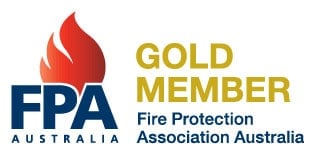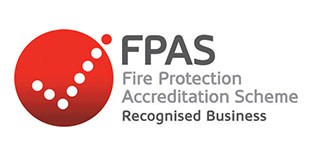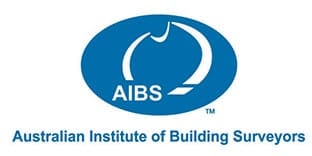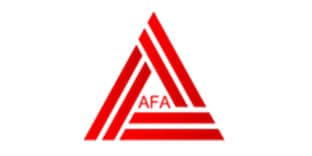At least 10 people are needed to put out a building or house fire, and here’s why
Aside from being fire safety certified and having your team trained in fire safety by Redmen Fire Protection Management, firefighters are some of the most important elements of fire safety and fire protection. Yet, people do not really know much about the ways in which they conduct suppression. Firefighting involves back-up, rescue, engineering, and evacuation as well as the extinguishing material itself.
This begs the question: How many people does it take to fight a fire? The answer cannot be easily answered. Depending on the size of the fire, its location, and the property’s fire preparedness, the number of fire respondents can range from 4 to 20. But, of course, the number of firefighters can exceed that range, especially if the fire is enormous.
There are different factors affecting fire protection. This consequently affects the number of people required to fight a fire. Discover more about a fire suppression system and how many people are needed to run it properly.

What does a full team of firefighters look like?
Ideally, a firefighting team should have the following:
- Incident Commander (1)
- Fire Attack Team (2)
- Two-Out (2)
- Driver / Engineer (1)
- Rescue Team (2)
- Ventilation Team (2)
Given the different roles in firefighting, the ideal number of firefighters to fight a fire is 10 or more. For smaller fire accidents, a leaner team is suitable. But for larger fire accidents, a team of 10 to 12 should be the minimum. Still, depending on the fire alarm level, the incident commander can order additional groups of firefighters.

What are the roles of firefighters during a fire accident?
There’s a gap between the ideal number of firefighters during fire versus the realistic number of respondents. There’s also a gap in the ideal resources versus the available resources of firefighters. Usually, the firefighters make do with the resources they have, but it is crucial to know the ideal number of firefighters responding to fire to gauge whether the response is going to be enough or not.
Incident Command System (ICS)
In firefighting, it is also not just a matter of numbers. If 20 firefighters showed up during a fire accident but they have no communication, they will not be able to perform their tasks well. There needs to be a division of tasks to respond efficiently to fire.
This is where the Incident Command System (ICS) comes in. This human fire suppression system breaks down the roles each firefighter must play to quell any type of fire properly. Here are some of the fundamental roles of firefighters in the ICS:
Incident Commander
The Incident Commander (IC) is in charge of the whole operation. They should create a plan of action and break down their teams into subgroups of two members or more. The Incident Commander should be fast-thinking and familiar with all aspects of firefighting. That way, they can give proper directions to their team.
Fire Attack Team
The fire attack team are the main individuals in charge of quelling the fire. They should know first where to point their equipment to contain the fire properly. The fire attack team should be familiar with the best way to counter fires depending on the situation.
For example, should the method of fire attack be parallel, direct, or indirect? Should they use fog attack, or should they use a combination of both direct and indirect attacks? The fire attack team should contain a minimum of two people – more if the fire is larger than a single house fire.
Two-Out
While the fire attack team deals with the fire, ideally, there should also be two more members outside the building who will monitor the situation. This team can also serve as a back-up in case the two-in attack team needs help (provided there are still additional firefighters outside to monitor the situation).
In minor fire accidents, the two-out team can initiate rescue themselves and also be assigned as the incident commander. On the other hand, for major fire accidents, there can be multiple two-in and two-out teams that deal with separate problem areas in the property.
Take note that it is critical for both the attack and back-up teams to be in groups of two. This is so that they can monitor each other and assist each other during the firefighting process. In addition, the teams should always have a clear visual of each other during fires to avoid accidents.
Driver / Engineer
Firefighters are famous for their fire trucks, but the driver of the truck does more than just transport the firefighting team from their headquarters to the fire location. The driver or engineer should also be in charge of the hose lines in the fire truck. They must pump the hose lines properly, attach them to whichever water source is available, and ensure that the attack team has enough water to quell the fire.
Ventilation Team
Ventilation is one of the essential tactics in structural firefighting. This involves the successful expulsion of smoke and heat from the property (such as a burning building).
A ventilation team is massively important. Only after they are successful in providing ventilation can firefighters move faster and safer inside the building. With better ventilation, the attack team can better deal with the fire, and the rescue team can find trapped individuals faster. A team of 2 or more firefighters should be part of the ventilation team.
Search / Rescue / Evacuation Team
This team is in charge of going into the burning property to search for people who may be trapped inside. Apart from looking for people, they are also in charge of rescuing these individuals and successfully evacuating them from the building. A team of two or more firefighters should be part of this team for smaller properties. A larger search/rescue/evacuation team is necessary for bigger buildings.

Let Redmen Fire Protection Management help prepare your property for fire accidents
In Australia, fire audits are necessary to get building permits. Your property should always be prepared in case a fire breaks out, which means that you should have pre-action systems to fight fire and fire safety equipment training.
Redmen Fire Protection Management can help you prepare special hazards solutions, including deluge systems, water spray and mist systems, and gas and foam suppression systems. We can also install automatic sprinklers, heat detection and smoke alarms, and fire extinguishers on a property.
For emergency warnings and evacuation installation, service and maintenance, you can count on us. We service properties in Newcastle, Central Coast, and Sydney. To find out more about our services, call us on 1300 733 636 or email us at . Alternatively, you can click here to send us an online message and we will contact you right back.




